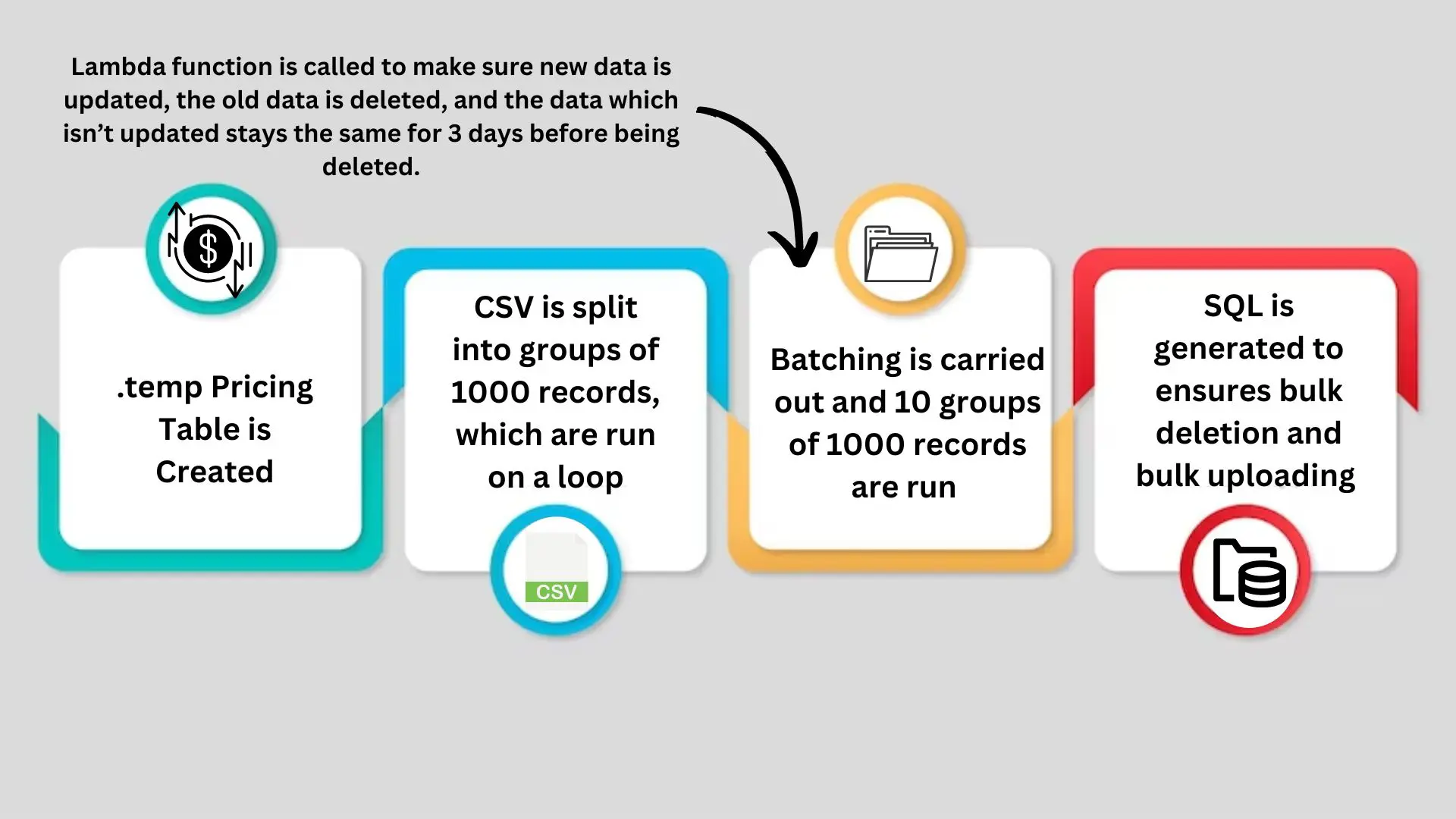The client deals with a huge volume of data that is updated daily.
The CSV contains 1,50,000 rows of pricing data which have to be uploaded to the server daily. It includes the names of the supplier and the pricing among other columns.
Original Process
Challenge
Benefit Of Our Solution

Also, to ensure that data is available to the users at all times, while the data was uploaded in the backend, the old data was still kept available for the users on the front end. This helped make sure that at no time was the platform devoid of data. It was made possible with the use of another database. Data processing happens in a separate database called pricing_upload and once processing is completed the pricing table data is deleted and new data is copied from the pricing_upload database.
The Result
The time taken to upload the CSV was brought down to 30-40 seconds.
Looking for similar solutions? Contact our product engineering team to discuss your project requirements today!
Bringing Your Ideas to Life & Crafting Your Digital Success
"Insights & Innovations: Stay Updated with Our Latest Blogs"

At SynergyTop, we meet a lot of teams that struggle with the same problem. Their good ideas get delayed. Here’s how it pans out: Everyone gets excited about a new...

Why this guide? A few years ago, our team at SynergyTop was brought in to audit an eCommerce platform. that was struggling with integrations. The client told us, “We already...

Healthcare software solutions are more than just a tool today. They are the backbone of operations, care delivery, and compliance. Using outdated or non‑scalable software may seem cost-effective at first....